
Model for Environmentally and Economically Sound Linked Energy Systems
Kansas Geological Survey
Open-file Report 2002-6

|
Model for Environmentally and Economically Sound Linked Energy Systems |
Kansas Geological Survey Open-file Report 2002-6 |
Projections by various entities, Energy Information Administration (EIA), California Energy Commission, Urbanchuck (2000), suggest that ethanol production will more than double by the end of 2004 from 1.8 billion gallons produced in 2001 as ethanol replaces Methyl Tertiary Butyl Ether (MTBE) as a gasoline oxygenate. Since the Environmental Protection Agency's directive to reduce MTBE use by 20% per year and elimination by 2005, ethanol demand (and production) has sky rocketed. The domestic ethanol industry set an annual production record of 1.8 billion gallons in 2001, up nearly 10 percent from 1.6 billion gallons in 2000 and 20 percent from 1.5 billion gallons in 1999 (Renewable Fuels Association, 2002). Responding to demand, current and anticipated, the ethanol industry is aggressively increasing its production through new construction, expansion of current facilities and increased utilization of existing facilities (see chart). A recent EIA report (Reynolds, 2002) suggests that there is sufficient transportation and retailing infrastructure to support the ethanol distribution and marketing 5.1 billion gallons.
|
|
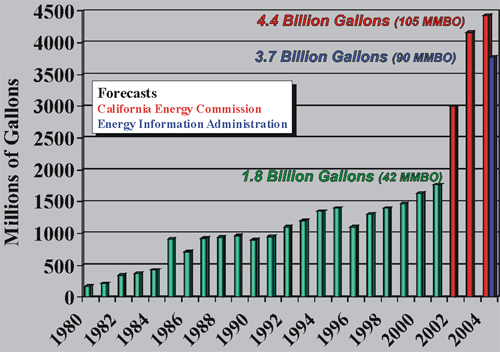 |
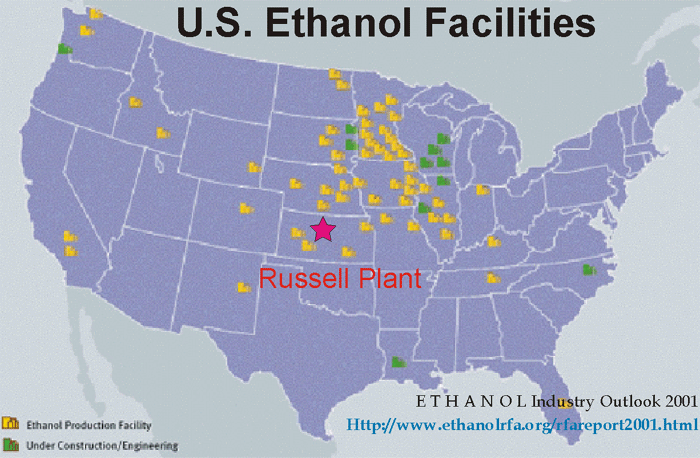
| Monthly Ethanol Production |
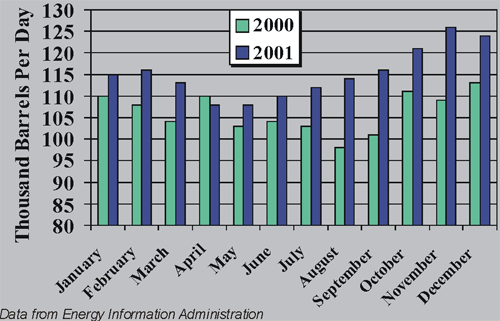 |
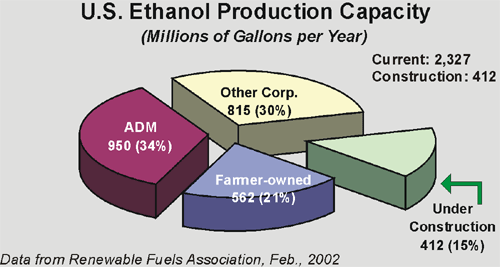
Liquid CO2 markets will not be able to absorb the additional CO2 generated by expansion in the ethanol industry and CO2 EOR offers a new market for CO2. Less than 20% of 6 million tons of CO2 generated by ethanol production is currently marketed, primarily as liquid CO2. Ethanol generated CO2 supplies 15% (1 million tons) of the 7 million ton per year liquid CO2 market that is expanding at an historical rate of approximately 5% per year (Shewbert, and Mork personal communication).
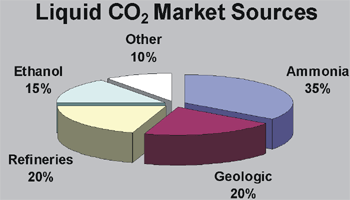
|
|
e-mail : webadmin@kgs.ku.edu
Last updated March 2002
http://www.kgs.ku.edu/PRS/Poster/2002/2002-6/P1-05.html